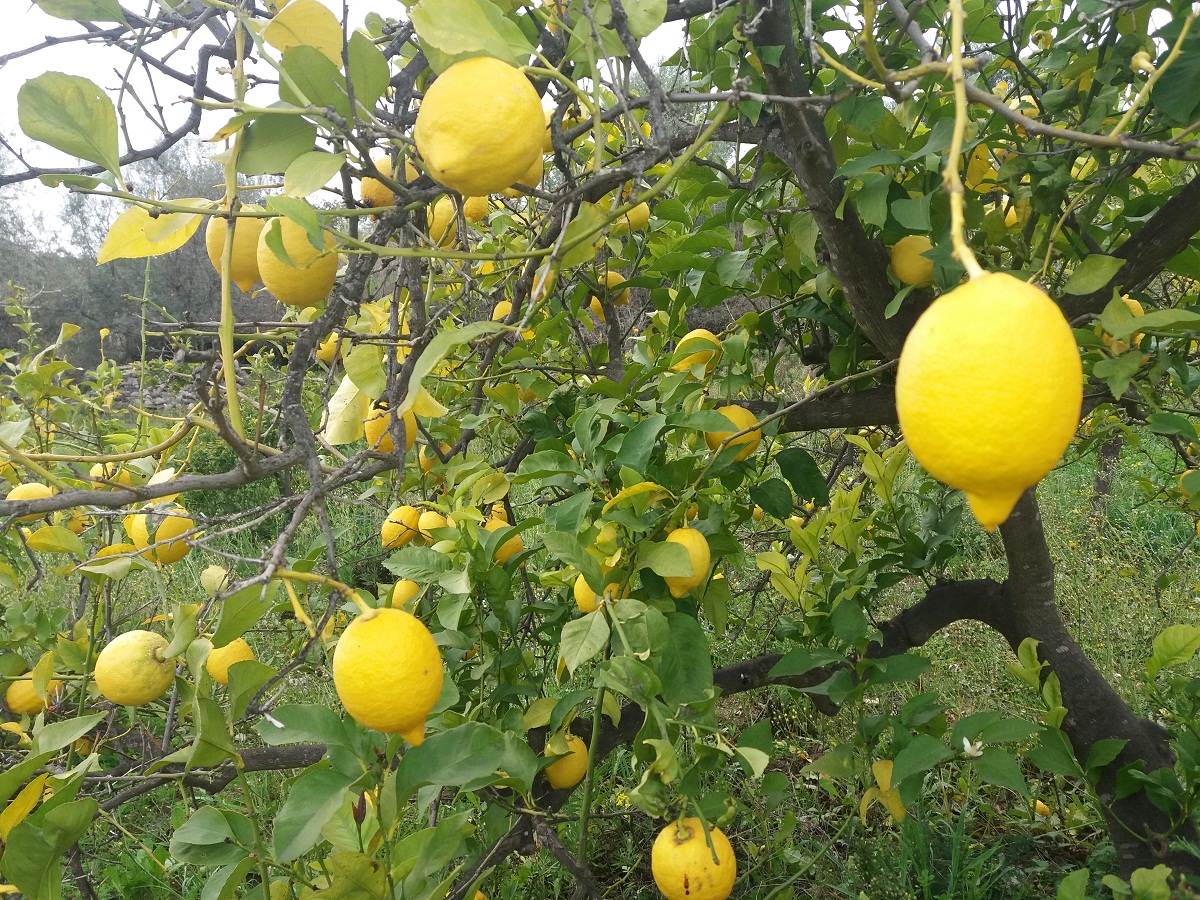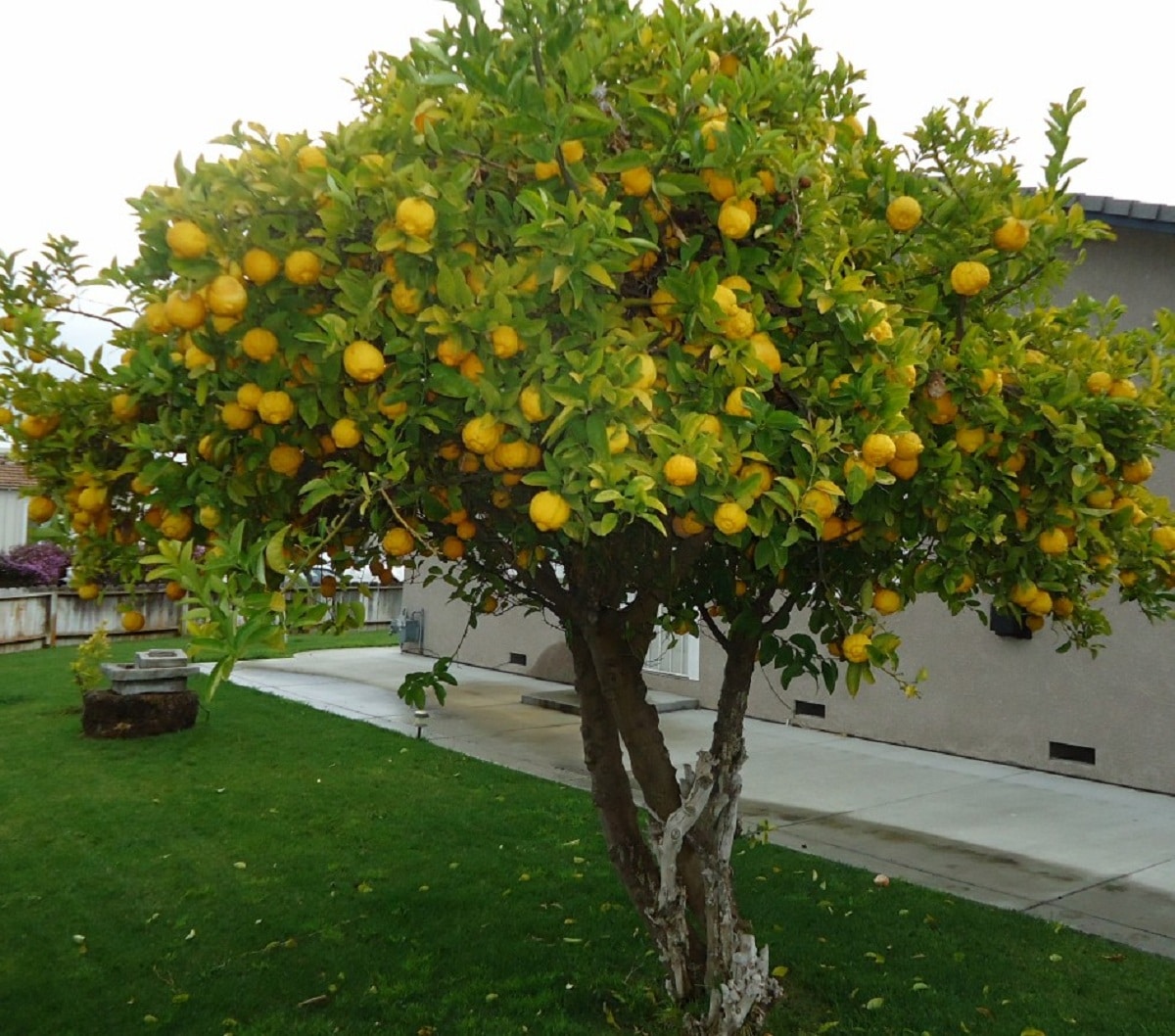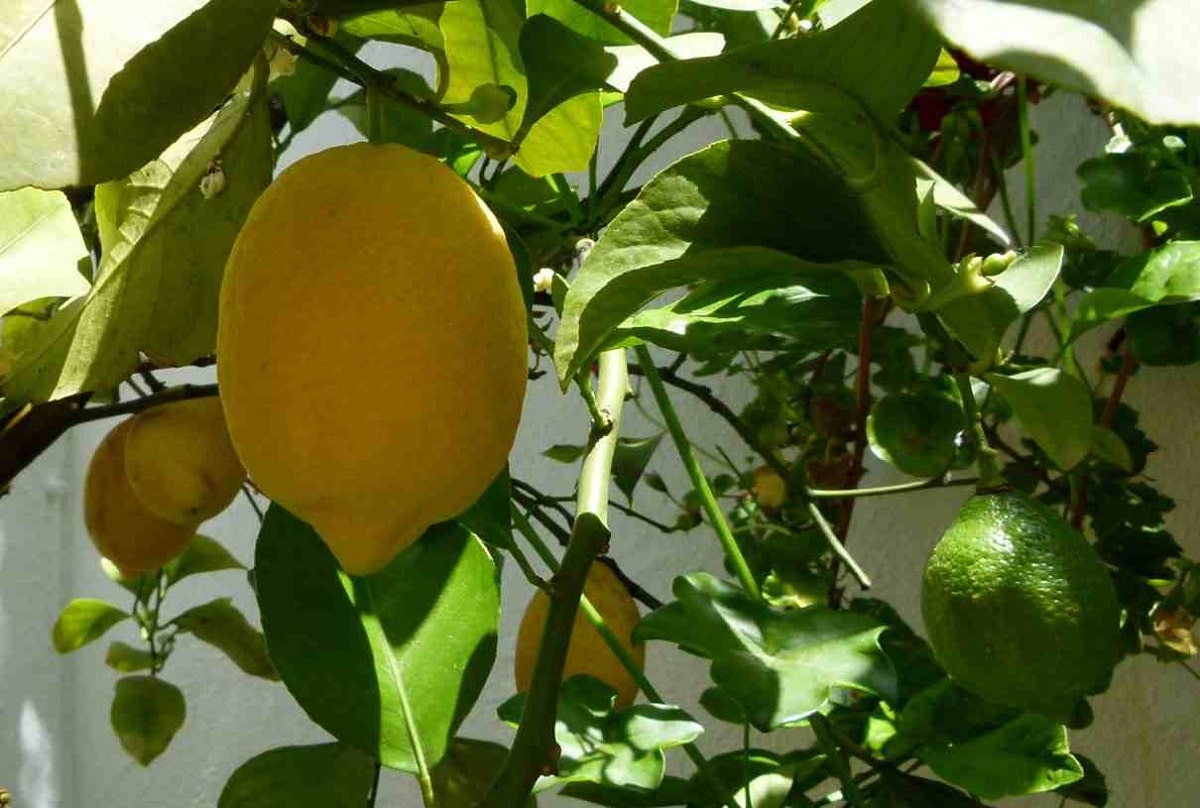
The lemon tree is one of the most cultivated fruit trees in the temperate and warm regions of the world. The fruit, although it cannot be consumed directly, is widely used to flavor various dishes. In addition, it is a plant that, with time and some pruning, can give good shade to the garden, making it a really interesting species.
Do you want to know what the care of the lemon tree is? Below you will know all the tricks so that your fruit tree produces a large amount of lemons.
Key features

The lemon tree, whose scientific name is Citrus x limon, It is an evergreen tree that reaches a height of 5-6 meters. It is the citrus species most sensitive to cold, withstanding very weak and occasional frosts down to -3ºC. This is something that must be taken into account, since if we live in an area the winter is cooler we will have to protect it with transparent greenhouse plastic or, even, inside the home in a room that is well lit.
It has a rounded crown that means that we do not have to do too much pruning to make it look attractive. Its trunk is thick and the bark is gray.. Depending on the type of lemon tree that we have planted, the texture of the trunk usually varies. We must bear in mind that, to be able to sow it and that it is in good condition, we must avoid soils with a high sodium index or shallow depth. This is because they reduce the productivity of the lemon tree. If we are going to have a common lemon tree for a purely aesthetic purpose, it is not necessary for it to produce too many lemons. On the other hand, if our objective is the production of lemons, we must take this aspect into account.
One of the characteristics that helps make lemon trees more attractive ornamentally is their scent. It is quite peculiar and pleasant helping to provoke an intoxicating aroma. It has serrated type blades that end in a point. The color of the leaves is matte green and they usually measure approximately between 5 and 10 centimeters in length, depending on the species. We can also see that they have thick and sharp thorns on the branches. The fruit or, the lemon, is ovoid in shape and is approximately 10 centimeters long when it reaches maturity. It usually has a nipple on the tip. The longevity of lemon tree is about 50-60 years, so they accompany us almost our whole life.
Lemon varieties

We have already mentioned several times that depending on the species of lemon tree we will have some lemon tree care or others. Let's see which are the main species that are cultivated:
- Eureka: it is the most common type of lemon tree cultivated. It usually grows throughout the year and abundantly.
- Lisboa: It is a tree that have more thorns on the branches during its youth. It usually has fruits that provide a greater amount of juice but have greater acidity.
- ponderous: It is a kind of lemon tree that is quite resistant to frost. The fruits vary from the rest in that they are longer and with a thinner skin.
- Mayer: It stands out for having a fruit that is a hybrid species between lemon and orange. Although it is yellow in color and in some orange tones. As it needs so much care, it is not commercialized.
- Yozu: It is a kind of lemon tree that is grown in Japan and Korea. Its fruit has characteristics among grapefruits and Chinese oranges. They are also cold tolerant.
Lemon tree care

Once we have our tree at home, we have to find a place protected from the cold and exposed to the sun directly so that it can grow. In the event that we want to have it in a pot, we will move it to one that is about 3-4cm wider; and if we want it -and if we can- have it on the ground, we will plant it in the garden at a distance of at least two meters from any other tall plant.
It is advisable to first nourish the soil with a fertilizer and other supplements that help it provide the necessary nutrients for its proper growth. It can be done by germination of seeds and for this it is advisable to wait until winter. This is because during this time it rests from flowering. It must be planted in an area where it is protected from the wind, not just from the cold.
If we talk about irrigationThis should be frequent, especially in summer since it does not resist drought. With this in mind, we will water it three to four times during the summer season, and every four days the rest of the year. The best irrigation is sprinkler and must be watered almost daily. They need a large amount of magnesium that can be incorporated by subscribing.
From spring to late summer we should take the opportunity to pay it with organic fertilizers, such as guano or manure, pouring a layer of two or three centimeters once a month.
Most of the lemon tree care must be given during its growth. Mainly the growth occurs in three seasons: in the spring the younger leaves are born with a lighter appearance than the adults and flower buds on the new branches. In the summer time there are some smaller births than in the spring since the temperatures are higher. We also see a fall growth in which some leaves are formed as a measure to secure the foliage.
Finally, we must prune it in late winter. For this we have to remove dead, diseased or weak branches, and trim those that are growing excessively. It should also be taken into account that the crown of the tree must be cleared in the center to allow light to enter the interior and nourish the roots. Pruning must be done in spring. None of them is advised to be very extreme so as not to damage the tree.
With these tips, our lemon tree will give us more than one joy every year as long as we keep it away from lemon tree pests more common.
thanks for the information provided here my lemon tree is dropping the small fruit like it lacks vitamins or something to stop it if there is a fertilizer please provide me the name and thanks to all of us who like home farming
Hello Roberto.
A fertilizer that is very rich in nutrients and quickly effective is guano. You have more information in this article.
a greeting
St. Monica
I am sending you photographs of my exceptional 15-year-old lemon tree, suddenly ill, I suspect that it was infected from a neighbor's lemon tree that is in very bad condition.
It did not grow new leaves this year and the old ones are falling from only one side of the crown, the branches have a green moss that in some parts is cracked as seen in the photographs.
I would like to give me your diagnosis about your condition and any suggested treatment, they tell me you have a fungus and to treat it with copper sulfate?
Thank you in advance for your response, which is very important to us.
Please tell me to which email I can send you the photographs. Thanks
Atte Riccardo
Hi Ricardo.
Well, you can't see the images, but from what you can tell, it's probably a fungus. Leaves falling off only on one side is not normal.
Copper sulfate is a very good fungicide, but really any fungicide that contains copper will do.
A greeting.
Hello, I had a lemon tree and I had to do some work, they took it out with its roots and said they would plant it for me in another place, the fact is that they did, but it took four days in which the lemon tree was out of the ground for four days waiting for it to be planted , in the end I did it but although they have told me that it will live, the truth is that it is ugly, in the event that it could endure, I could help you in some way, thank you very much.
Hi Mila.
Each master has his booklet, but my personal opinion is that they should not have taken so long to plant it. A lemon tree is not a chestnut tree, for example, which has the most resistant roots to transplants.
But well, what it's done, is done. Water it with rooting hormones for the first few times, and when a month or so has passed, scratch the trunk or a branch a little to see if it is still green.
Cheer up!
What a lousy translation...